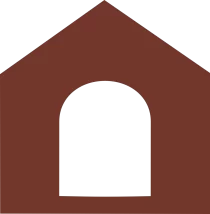
Quotidian Printmaking Class
Jeffrey and I attended our first printmaking class at Flatbed Press on February 4-5, 2023. The Quotidian Print, a class title that instantly intrigued us, brought together a small cadre of enthusiastic and diverse students with a veteran printmaker, Kerry Maguire. Kerry recently earned her MFA in printmaking from the University of Texas at Austin, which marries with her undergraduate degree in biomedical sciences and philosophy. She created the workshop to help students explore the possibilities of using commonplace materials as sources for making prints. The workshop’s higher goal was to encourage students to hone their observational acuity to the world around them, reimagining both the natural and build environment through the lens of printmaking. I have heard printmaking referred to as a “democratic art,” referring to its ability to make numerous, quality works of art at an economical price point. That said, our class focused on learning printing techniques that create singular, unique works.
What magic can happen when you set a curious and creative group of people loose in a printmaking workshop under a patient and expert teacher! I heard Kerry say, “alchemy,” which is an apt description. Five students, including the two of us, Chris, Michelle, and Ted, were allowed to let our imaginations roam and create an unexpected array of works within the confines of the printmaking techniques used in the class.
Kerry started with an exercise involving rubbings (frottage in French), a marriage of printmaking and drawing, that was supposed to sensitize us to objects around us that could be sources for art and to energize creativity. Everyone was dazzled by Jeffrey’s rubbing, in which he composed a transit map of sorts sourced from various surfaces in the workshop. He one-upped the rest of us by applying color to the finished drawing. This first exercise, like most creative acts, energized and informed the next. We learned that creativity in a group setting can be infectious and fired our thinking about what is possible.
Next we employed cyanotype, in which we placed objects on a light sensitive surface (in our case, fabric) and exposed them to sunlight for a few minutes. We transformed everything from livestock corn to bric-a-brac to jewelry to plants and other found objects into their negative counterparts outlined by the unmistakable cyanotype blue background.
We moved on to the monotype, in which an artist prints a singular image on paper from some sort of inked printing matrix, in our case an acrylic sheet. The possibilities seemed almost endless, so long as you did not use anything that would damage the press roller, such as a metal object. Once a composition is complete on the acrylic plate, ink is applied with a brayer. Unlike rubbing and cyanotype, monotypes required our first interaction with a press. Having access to these expensive beasts are one of the main reasons printmakers join a community workshop such as Flatbed’s. I most enjoyed monotyping because I found that I loved working with ink for its consistency, surface quality, and rich pigment. Spreading a glob with a putty knife was a thrill. Mixing colors was magic. I even enjoyed scraping it off the work surface and spreading it in phonebook pages (a cleaning technique). I also liked the subtle effect of printing in pure white. Kerry introduced us to chine-collé, a technique (gluing actually) whereby fabric or tissue is adhered to the paper by the pressure of the press. I found that using three-dimensional objects in the prints, such as bear grass, highlighted a print’s sculptural aspect. The paper is able to pick up the tiniest veins in the leaves. I also loved the unexpected thrill of seeing the definition of the plates edges impressed into the paper. We were using 100% cotton rag Somerset paper. Nothing compares to the frisson of pulling back the printing felts, peeling back the paper, and revealing the results after the print comes out of the press.
Rust printing is another technique that we learned. Iron or steel objects are placed on a wet piece of paper then doused with vinegar and salt, which accelerates rusting. The rust impregnates the paper, resulting in an image. Again, results can be unexpected and oftentimes exciting.
The final printing technique we experimented with was eco printing or eco dyeing , in which natural color from plants are transferred to a “printing” strata with heat and moisture.
This class whetted our appetite for exploring more, and getting introduced to the breadth of equipment in the workshop, as well as viewing many finished works from our fellow classmates as well as established printmakers, informed our understanding of the depth of printmaking options.
















I love them ALL!!! You guys did a fantastic job and, yes, I certainly agree when creating art in the presence of like-minded individuals you feel the electricity and your work will respond! Can I get an “AMEN”?
I wish you had been there!!
I’m excited to learn about your experience at Flatbed! Kerry is a masterful and imaginative teacher. Thank you for giving everyong a peak into what quotidian printmaking is all about and spreading the good printmaking word.